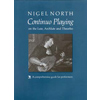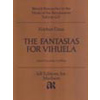Description
Damiani Andrea, “Method for Renaissance Lute”
Traduction Doc Rossi
Paperback. 208 Pages. 235×315 mm
Publisher: Ut Orpheus Edizioni
CONTENTS:
Preface
Introduction
CHAPTER 1. TUNING AND TABLATURE: Tuning – Tablature (French tablature – Italian tablature – Rhythm symbols – Fingering and other symbols) – Stringing and doubling – Tuning practice (Practical advice on tuning – Tuning problems) – Strings
CHAPTER 2. BASIC TECHNIQUES: Posture and position of the lute – Right-hand position – Right-hand functions – Sound production (Positioning p – Forearm movement – Attack – Positioning i) – Alternating p and i – Finger articulation for polyphonic passages (Positioning p – Positioning i) – Preparatory exercises – Differences from guitar technique – Body control
CHAPTER 3. THE RIGHT HAND: Forearm and accentuation – Fingering
CHAPTER 4. THE LEFT HAND: General principals – Preparatory exercises – Avoiding stiffness – Differences from guitar technique – Hand coordination
CHAPTER 5. SCALES: Right-hand Scale technique (Forearm movement – Finger articulation – Integrating the two techniques)
CHAPTER 6. EXERCISES FOR TWO LUTES: Exercises on a Ground bass – Contrapuntal exercises – Articulation – Dances and Ground basses
CHAPTER 7. SHIFTING LEFT-HAND POSITIONS: Fundamental principals – Position changes using the same finger – Position changes by substitution – Position changes by jump
CHAPTER 8. EXERCISES FOR TWO LUTES WITH POSITION CHANGES
CHAPTER 9. RIGHT-HAND TECHNIQUE IN POLYPHONIC MUSIC: p-i articulation – Positioning m – Rest stroke with p – Left-hand positions and movement – m-i articulation – Combining p, i and m – Easy pieces in two voices – Two-voice Scales
CHAPTER 10. COUNTERPOINT: Voice progression and intervals – The species – Florid counterpoint – Imitation – Syncopation – Suspension
CHAPTER 11. CONTRAPUNTAL PIECES IN TWO VOICES
CHAPTER 12. THREE VOICES: The right hand – Combining chords and single notes – Repeated chords and monophonic passages – Arpeggios – Chords and counterpoint
CHAPTER 13. CONTRAPUNTAL PIECES IN THREE VOICES: Technical aspects: three-voice Scales, the barre – Contrapuntal pieces in three voices
CHAPTER 14. CHORDS OF FOUR OR MORE NOTES: The ring finger (a) – Five- and six-note chords
CHAPTER 15. IDIOMATIC LUTE COMPOSITIONS: Chords and divisions – Characteristics of lute composition
CHAPTER 16. TRANSFORMATION OF LUTE TECHNIQUE DURING THE 16th CENTURY: Evolution of right-hand position – Exercises for m-i alternation
CHAPTER 17. TECHNIQUE: Scales (Full-length Scales in all keys – Scales with divisions) – Speed – Left-hand legato and ornamentation – The barre (Preparatory exercises – Barre exercises) – Scales in two and more voices (Two-voice Scales – Three-voice Scales) – Polyphonic patterns – Right-hand exercises
CHAPTER 18. RENAISSANCE PERFORMANCE PRACTICE: Interpretation (Rhetoric – Sound quality – Rhythmic inequality) – Ornamentation (16th-century sources – The first half of the 16th century – The second half of the 16th century – The first half of the 17th century – The Elizabethans)
CHAPTER 19. TEMPERAMENT: Meantone temperament – Equal temperament





